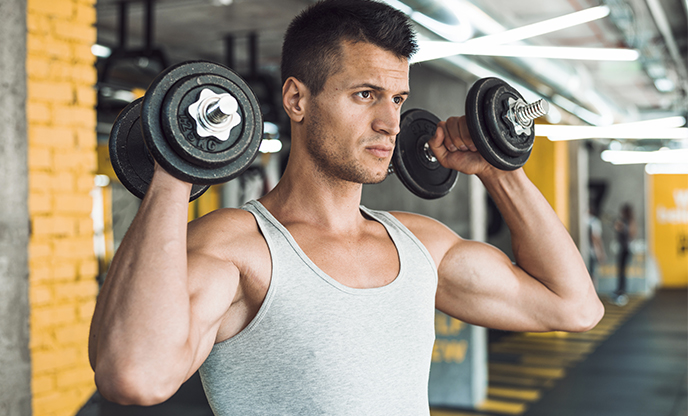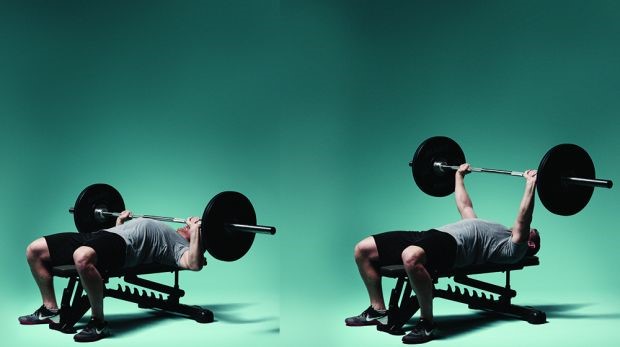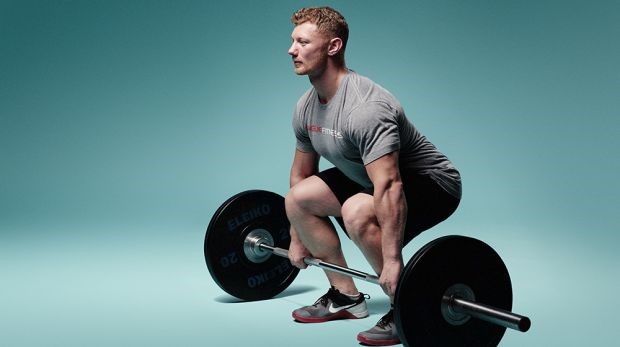
Powerlifting:
Whether you want to get bigger and stronger or lose some of that extra padding around your middle, it’s time to perfect your powerlifting.
When we talk about powerlifting we’re focusing on the three moves that you perform in powerlifting competitions: the squat, deadlift, and bench press.
Your best effort in each lift is added together to form your total score. It’s hard to say what constitutes an impressive total because that’s heavily dependent on your weight and training experience, but one thing’s for sure – the total achieved by MF expert Tom Hamilton at the World Drug-Free Powerlifting Federation world championships was impressive.
His score of 665 (242.5kg squat, 270kg deadlift, and 152.5kg bench) in the 82.5kg class earned him first place and the right to call himself a world champ. He shares his advice about how to conquer the big three – and get bigger and stronger than ever.
Why are the three powerlifting moves useful as a foundation for a training program?
“They involve a large majority of muscles in the body and can allow for the most weight to be lifted,” says Hamilton, who also works as head of programming at W10 Performance.
“This makes them a good choice as foundational exercises within a program because they can help to increase total workout volume, which is vital for building strength and muscle.”
How should someone begin to incorporate powerlifting into their training?
Perform The Three Lifts At Least Once A Week
“The first step would be to make sure you perform the three lifts at least once a week. As a starting point, performing some form of testing to gauge your current level would be ideal.
For a general rule, test your five-rep max in the three lifts and then plug these numbers into a rep calculator to find out your projected maxes. A beginner testing a 5RM will find this increases quickly compared with someone who is at an intermediate level.”
Squat

“Squatting involves almost every muscle in the body, and there’s something about lifting a heavy bar on your back that gives you a sense of achievement,” says Hamilton. “It’s a versatile exercise that can be used for a variety of rep ranges and goals, from grinding out a one-rep max to an all-out set of 20 that leaves your legs feeling like jelly and your heart pounding. It can build strength and muscle and help you to lose fat –all in one exercise.”
How do you rate it?
- Beginner1 x bodyweight
- Intermediate5 x BW
- Advanced2 x BW
Perfect form
Stand up straight holding a bar on your back with your feet turned out slightly. To initiate the movement, bend at the hips and knees simultaneously. Keep your chest up and your weight on your heels, lower until your hips go below your knees. You can push your knees out slightly at the bottom of the squat to get extra depth, then move them back in to start the push-back up.
Expert tip
“Create a repeatable process so that every time you set up for a squat, you go through a mental checklist of cues,” says Hamilton. “Grip the bar tight, pull the bar down into you, stand tall, set your stance and foot position, and begin the squat. Using video feedback is great for checking that you’re hitting the right depth so you can’t lie to yourself.”
What do most people get wrong?
“It has to be squatting to an adequate depth,” says Hamilton. “The most common mistake I see is people getting hung up on the load on the bar and forgetting the technique.”
What should you do if you’re struggling to perform well?
“If getting low enough – so your thighs are at least parallel to the floor – is an issue, I advise doing pause squats alongside a regular mobility routine,” says Hamilton. “Pausing at the bottom will gradually release tightness, build strength in the newfound range and give you better awareness of what the correct position is.”
Essential assistance move
“I like doing a different variation of squat from your primary squat exercise,” says Hamilton. “This allows you to train a similar movement pattern without being exactly the same, which helps avoid overuse injuries and keeps training interesting.
Bench Press

“When performed correctly it works the chest, delts, triceps, and lats, making the bench press a primary movement to be included in your training,” says Hamilton. “It can be used to improve strength, power, build muscle and improve general fitness, all of which makes it a key exercise for the upper body. There aren’t many, if any, other upper-body pressing exercises that can match this.”
How do you rate it?
- Beginner75 x BW
- Intermediate1 x BW
- Advanced5 x BW
Perfect form
Lie on your back on a bench with a slight arch in your spine and your feet planted on the floor just behind your knees. Hold the bar with hands just wider than shoulder-width apart, then lower it to your chest. Press your head and shoulders into the bench and your feet into the floor, and press the bar back up.
Expert tip
“Keep your shoulders blades retracted and learn to push through your heels,” says Hamilton. “These techniques will make a big difference to your bench press. Something else I like to imagine when pressing the weight is pushing myself into the bench, away from the bar.”
What do most people get wrong?
“Failing to realize the role the lower body plays in the exercise,” says Hamilton. “Your legs should provide an additional force to help press the bar up. If you see someone wriggling around on the bench as they try to press with their legs flapping around, they are losing power. The more stability you can create when you press, the stronger you will be.”
What should you do if you’re struggling to perform it well?
“If you only bench once a week, I’d advise simply increasing the frequency to get more practice at the movement,” says Hamilton. “Also, really hammer home your technique with lighter loads – approximately 70-80% of your 1RM.”
Essential assistance move
“One of my favorite assistance exercises is the dumbbell bench press, but I also like to do the barbell bench press with chains,” says Hamilton. “If you struggle with your lockout on the bench press, this helps you build strength and power in that position due to the accommodating resistance [the bar gets heavier the higher it goes].”
Deadlift

“From head to toe a lot of muscles are involved, in particular, the posterior chain of the body which is a common weakness,” says Hamilton. “With all these muscles being used it makes the deadlift a great option for losing fat and building muscle mass because of the high demands placed on the body.”
How do you rate it?
- Beginner5 x BW
- Intermediate2 x BW
- Advanced5 x BW
Perfect form
Start with your feet shoulder-width apart, holding the bar with an overhand grip (an alternate grip with one overhand and one underhand is also fine). Position the bar so that your shoulders are over it and it is directly above your midfoot. To initiate the movement, pull your shoulders back to activate your lats, make sure your hamstrings are loaded, and pull the bar off the ground by straightening your legs, keeping the angle of your torso the same. As the bar passes your knees, straighten up until you’re standing upright, then reverse the movement back to the start. If it’s a very heavy weight, you can drop the bar –carefully – at the top.
Expert tip
“Keep the barbell close,” says Hamilton. “Holding a heavyweight close to the body makes it much easier to lift. And your starting position should be with the bar covering the knot in your shoelaces.”
What do most people get wrong?
“They lift with a rounded back,” says Hamilton. “This more often or not comes down to one or more of three things: bad technique, lacking the mobility to lift from the floor with a good back position, or just too much weight on the bar.”
What should you do if you’re struggling to perform it well?
“If you can’t maintain a good back position when pulling from the floor, elevate the barbell in a rack or on some plates,” says Hamilton. “This will reduce the mobility requirements, helping you to keep the correct position. Over time try to reduce the height you pull from, alongside performing mobility work.”
Essential assistance move
“Paused deadlifts, where you lift the bar from the floor and hold an isometric position for a few seconds just below the knees, are helpful,” says Hamilton. “They’re great for learning to maintain the correct positioning and not let your hips shoot up too fast so that you end up pulling from the lower back.”
